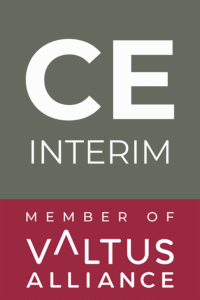Provozování podniku s sebou přináší řadu problémů, ale jen málo z nich je tak náročných jako finanční potíže. Jako odborník na řízení podnikových financí a správu dluhů jsem viděl nespočet podniků, které musely čelit těžkým rozhodnutím, pokud jde o jejich finanční budoucnost. Mezi nejvíce nepochopené pojmy patří platební neschopnost a úpadek - obě situace jsou vážné, ale zásadně se liší.
Pokud se potýkáte s dluhy, může být porozumění těmto podmínkám klíčem k záchraně vašeho podniku.
V tomto článku rozebereme rozdíly, nabídneme řešení a poradíme vám, zda se na vaši firmu vztahuje insolvence nebo konkurz.
Co je insolvence?
Insolvence je finanční stav, kdy váš podnik není schopen plnit své splatné dluhy. Nemusí nutně znamenat konec vašeho podnikání, ale je to červený prapor, který naznačuje, že je třeba přijmout opatření.
Druhy insolvence
Existují dva hlavní typy insolvence a jejich pochopení vám pomůže lépe diagnostikovat vaši situaci:
- Insolvence v oblasti peněžních toků: K tomu dochází, když vaše firma má aktiva, ale nemáte dostatek likvidní hotovosti na splacení okamžitých dluhů. Podnik může mít například vozový park nebo nemovitý majetek, ale nemůže pokrýt mzdy nebo zaplatit dodavateli.
- Rozvahová platební neschopnost: V tomto případě vaše závazky převyšují vaše aktiva. I když vyděláváte dost peněz na splácení krátkodobých dluhů, vaše firma je technicky v platební neschopnosti, protože vaše dlouhodobé závazky převyšují vaše aktiva.
Oba typy platební neschopnosti vyžadují proaktivní řízení, ale často je lze zvrátit, aniž by bylo nutné přijmout drastičtější opatření.
Co je to bankrot?
Zatímco platební neschopnost je finanční stav, úpadek je právní proces. Je to nástroj, který podniky používají buď k likvidaci svého majetku, nebo k reorganizaci svých dluhů, aby mohly začít znovu.
Typy úpadku pro podniky
- Kapitola 7 Bankrot: Známý jako likvidační konkurz, tento proces zahrnuje rozprodej majetku společnosti za účelem vyplacení věřitelů. Jakmile se tak stane, podnik je obvykle zrušen.
- Úpadek podle kapitoly 11: Kapitola 11, často označovaná jako reorganizační bankrot, umožňuje podnikům pokračovat v činnosti a zároveň restrukturalizovat své dluhy pod dohledem soudu. Jedná se o běžnou volbu pro podniky, které se domnívají, že se mohou vrátit k ziskovosti pomocí správného plánu řízení dluhů.
- Kapitola 13 Bankrot: Tento způsob je častěji používán fyzickými osobami, ale lze jej použít i pro majitele malých podniků, kteří jsou živnostníky. Zahrnuje vytvoření splátkového kalendáře, který dlužníkovi umožní splatit část dluhů v průběhu času, aniž by přišel o svůj majetek.
Insolvence vs. konkurz: Klíčové rozdíly
Rozdíl mezi insolvencí a konkurzem spočívá v tom, že insolvence je finanční problém, zatímco konkurz je právní řešení. Podniky mohou často insolvenci zvládnout nebo zvrátit bez zásahu soudu, zatímco bankrot formálně prohlašuje, že podnik není schopen dostát svým finančním závazkům, a vyžaduje soudní zásah.
Zde je jednoduché srovnání:
- Insolvence: Váš podnik nemůže včas splácet své dluhy, ale stále existuje šance na jejich úhradu prostřednictvím vyjednávání o dluhu, prodeje majetku nebo finanční restrukturalizace. Pro jednotlivce, kteří čelí podobným okolnostem, se nabízí formální možnost, jako je např. dohoda o osobním bankrotu může poskytnout strukturovanou cestu vpřed jako alternativu k bankrotu.
- Konkurz: Právní proces prohlášení, že nejste schopni splácet své dluhy. Věřitelé mohou být nuceni přijmout soudem schválený splátkový plán nebo likvidaci majetku.
Příklad:
Řekněme, že provozujete maloobchodní prodejnu. Kvůli pomalému prodeji a problémům v dodavatelském řetězci nemůžete včas platit svým dodavatelům - to je platební neschopnost. Pokud vaše dluhy převyšují hodnotu zásob a majetku vašeho obchodu, jste také v rozvahové platební neschopnosti. Strategickým vyjednáváním nebo restrukturalizace, můžete se vyhnout bankrotu a získat zpět stabilitu.
Příznaky, že vaší firmě hrozí platební neschopnost
Je důležité rozpoznat včasné varovné příznaky platební neschopnosti, abyste mohli rychle jednat:
- Problémy s peněžními toky: Máte problém pokrýt provozní výdaje, jako jsou mzdy, nájemné nebo platby dodavatelům.
- Narůstající dluhy: Váš dluh stále roste a věřitelé vám volají stále častěji.
- Potíže se zajištěním financování: Banky nebo investoři nejsou ochotni poskytnout úvěr kvůli vaší finanční nestabilitě.
Pokud si všimnete některého z těchto příznaků, je čas prozkoumat řešení.
Řešení, jak se vyhnout bankrotu
I když je váš podnik v platební neschopnosti, neznamená to automaticky, že je bankrot nevyhnutelný. Zde je několik možností, které je třeba zvážit:
1. Vyjednávání o dluhu
Kontaktujte své věřitele a vysvětlete jim svou situaci. Mnoho podniků úspěšně vyjednává o podmínkách splácení, zejména pokud je alternativou konkurz, kde by mohly dostat ještě méně. Věřitelé mohou souhlasit se snížením splátek, prodloužením lhůt nebo dokonce s odpuštěním dluhů.
2. Prodej nepotřebných aktiv
Pokud máte cenný majetek, který není pro provoz podniku rozhodující, zvažte jeho prodej, abyste získali hotovost a stabilizovali svůj podnik. Pokud například vlastníte firemní vozidla, která nejsou neustále využívána, jejich prodej by mohl přinést okamžitou likviditu.
3. Restrukturalizace a snižování nákladů
Zhodnoťte své výdaje a hledejte oblasti, kde můžete snížit náklady, aniž byste museli obětovat základní funkce svého podniku. Můžete některé činnosti zadat externím dodavatelům? Znovu projednat podmínky pronájmu? Snížení režijních nákladů může pomoci uvolnit hotovost na splácení dluhů.
4. Fúze nebo akvizice
V některých případech může být záchranou fúze s větší, finančně stabilní společností nebo její akvizice. To je běžné zejména v odvětvích, kde hodnota značky nebo zákaznické základny má větší hodnotu než okamžité finanční závazky.
Kdy je bankrot správnou volbou
Někdy může být bankrot tou nejlepší nebo jedinou dostupnou možností. Pokud vaši věřitelé usilují o soudní řízení nebo pokud vaše dluhy značně převyšují vaši schopnost splácet, může vám bankrot přinést úlevu.
Klíčové příznaky, že byste mohli potřebovat podat návrh na bankrot
- Věřitelé podávají žaloby: Pokud dostáváte soudní oznámení od věřitelů, může být bankrot nejlepším způsobem, jak zabránit zabavení majetku nebo dalším právním komplikacím.
- Přetížení dluhem: Pokud je dluh nepřekonatelný a žádná restrukturalizace nebo vyjednávání se nezdají být proveditelné, je možné podat návrh na bankrot a dosáhnout tak čistého konce nebo zvládnutelného splátkového plánu.
- Ochrana klíčových aktiv: Bankrot vám může umožnit ponechat si klíčová aktiva podniku během reorganizace dluhů, zejména v rámci kapitoly 11.
Závěr: Navigace při insolvenci nebo úpadku
Insolvence a úpadek jsou náročné situace, ale nemusí znamenat konec vašeho podnikání. Díky pečlivému plánování a profesionálnímu poradenství mnoho podniků úspěšně zvládne finanční potíže a vyjde z nich silnější. Včasné rozpoznání příznaků a znalost možností - ať už se jedná o vyjednávání o dluhu, nebo o bankrot - může vše změnit.
Pokud má váš podnik problémy s plněním svých finančních závazků, je nezbytné požádat o radu finanční a právní odborníky, kteří vám pomohou určit nejlepší postup. Někdy stačí správná restrukturalizační strategie, aby se situace změnila, jindy může být cestou k novému začátku bankrot.
V každém případě je znalost rozdílu mezi insolvencí a úpadkem prvním krokem k informovanému rozhodnutí o budoucnosti vašeho podniku.





